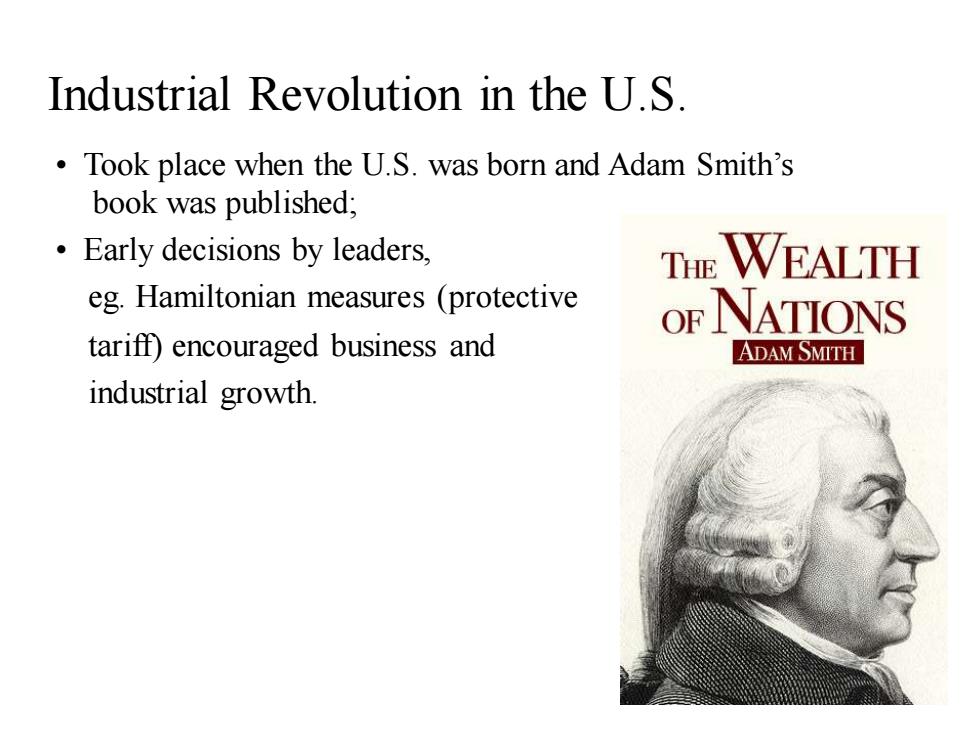
Industrial Revolution in the U.S Took place when the U.S.was born and Adam Smith's book was published; Early decisions by leaders, THE WEALTH eg.Hamiltonian measures (protective OF NATIONS tariff)encouraged business and ADAM SMITH industrial growth
• Took place when the U.S. was born and Adam Smith’s book was published; • Early decisions by leaders, eg. Hamiltonian measures (protective tariff) encouraged business and industrial growth. Industrial Revolution in the U.S
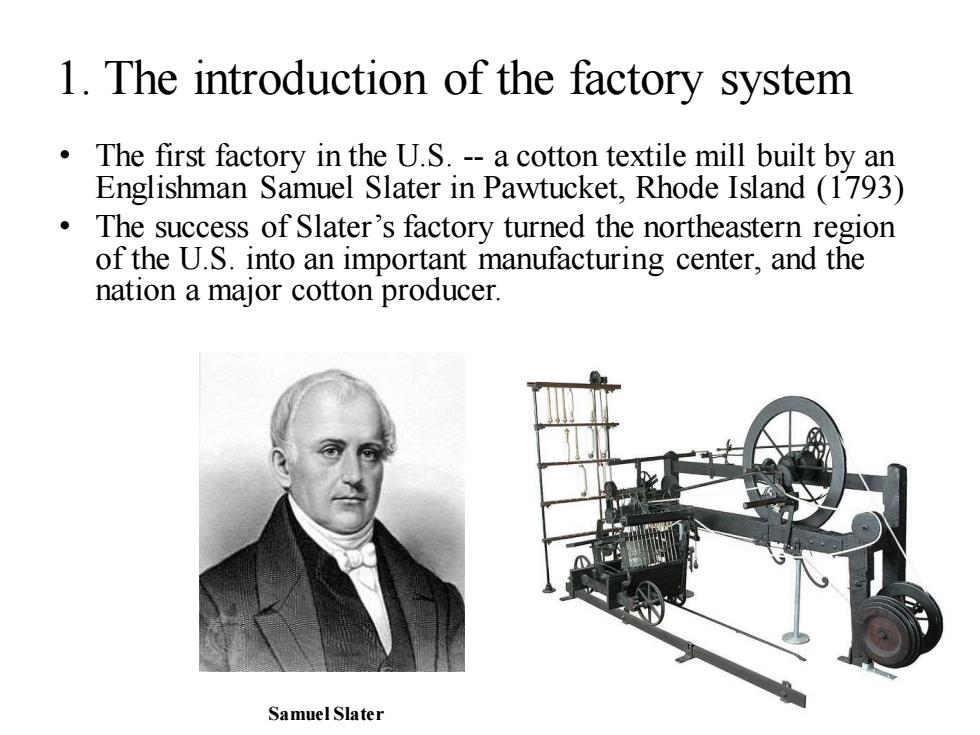
1.The introduction of the factory system The first factory in the U.S.--a cotton textile mill built by an Englishman Samuel Slater in Pawtucket,Rhode Island (1793) The success of Slater's factory turned the northeastern region of the U.S.into an important manufacturing center,and the nation a major cotton producer. Samuel Slater
1. The introduction of the factory system • The first factory in the U.S. -- a cotton textile mill built by an Englishman Samuel Slater in Pawtucket, Rhode Island (1793) • The success of Slater’s factory turned the northeastern region of the U.S. into an important manufacturing center, and the nation a major cotton producer. Samuel Slater
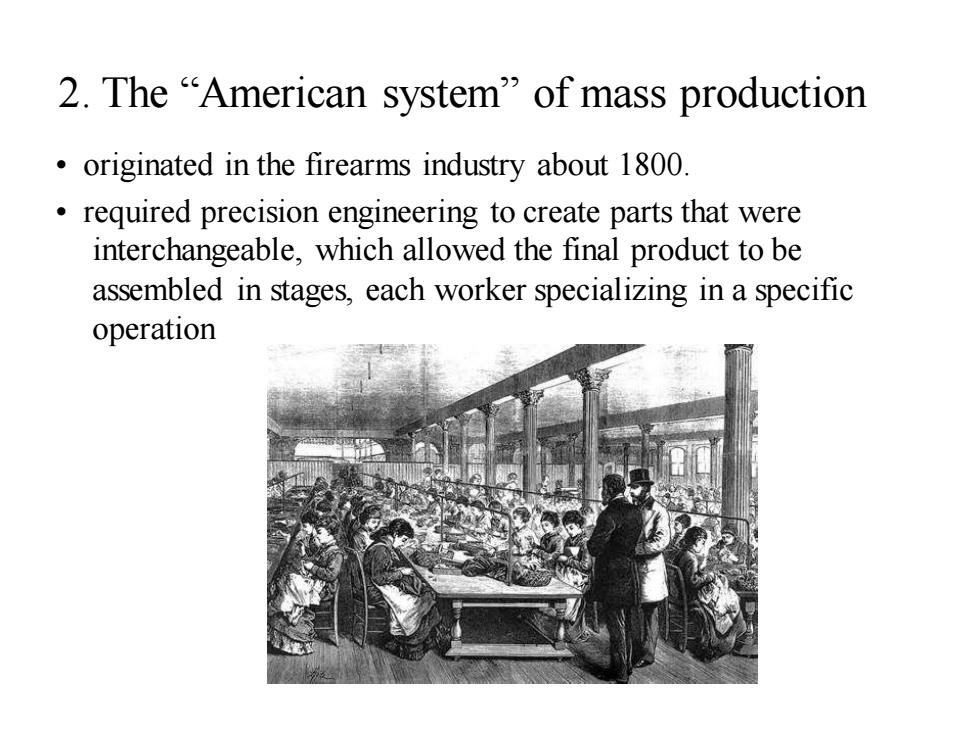
2.The“American system”of mass production originated in the firearms industry about 1800 required precision engineering to create parts that were interchangeable,which allowed the final product to be assembled in stages,each worker specializing in a specific operation
2. The “American system” of mass production • originated in the firearms industry about 1800. • required precision engineering to create parts that were interchangeable, which allowed the final product to be assembled in stages, each worker specializing in a specific operation
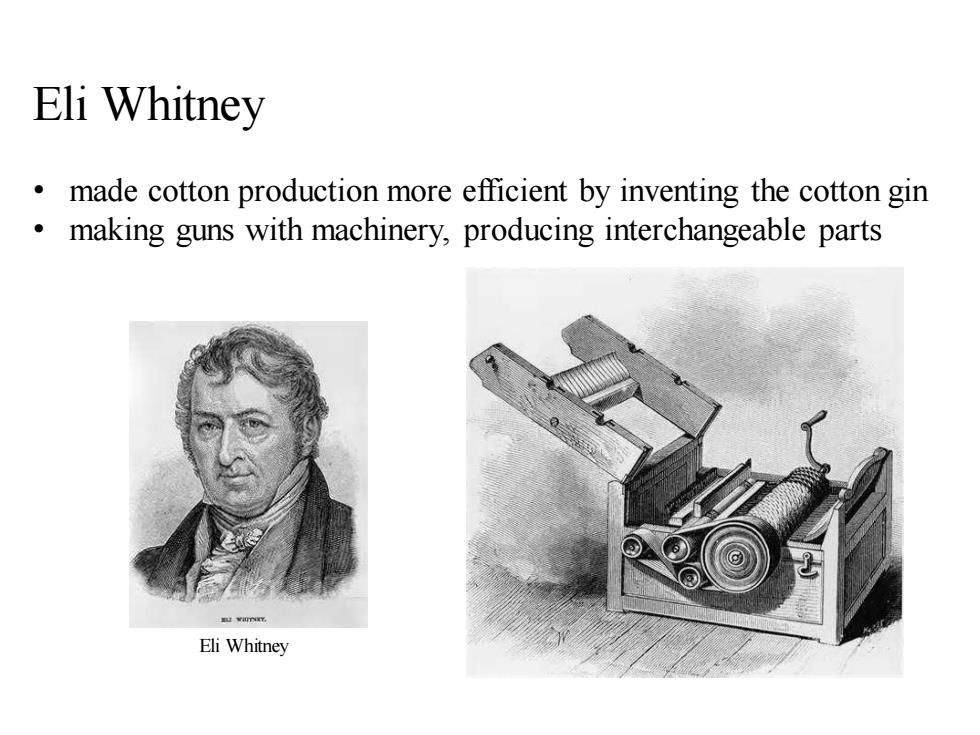
Eli Whitney made cotton production more efficient by inventing the cotton gin making guns with machinery,producing interchangeable parts B WIDYET. Eli Whitney
Eli Whitney • made cotton production more efficient by inventing the cotton gin • making guns with machinery, producing interchangeable parts Eli Whitney
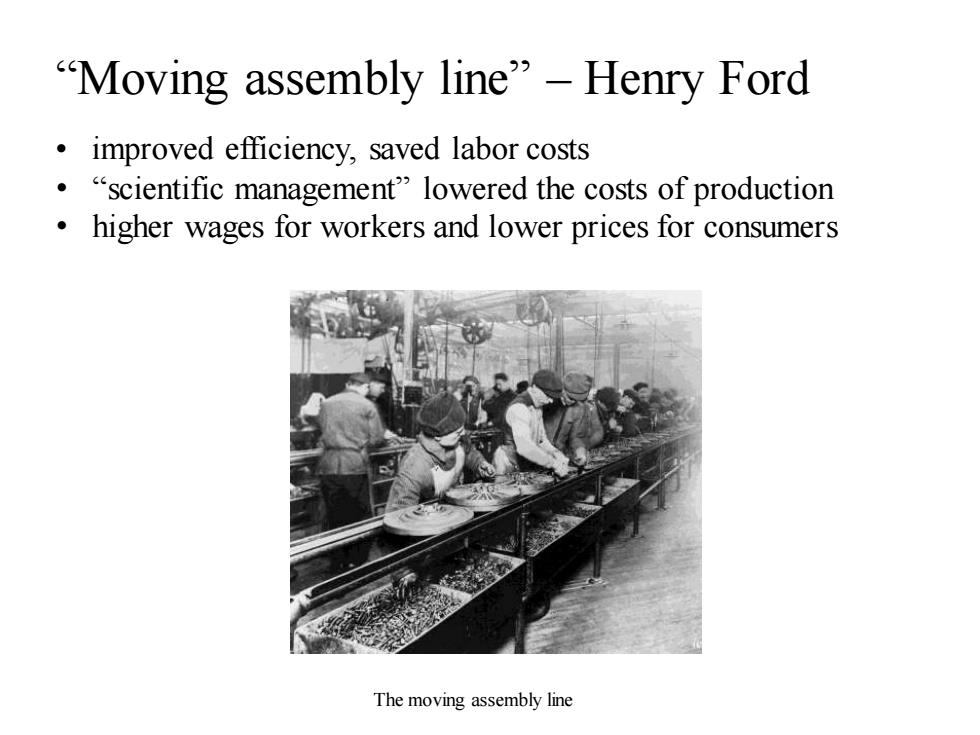
Moving assembly line"-Henry Ford improved efficiency,saved labor costs 。 "scientific management"lowered the costs of production higher wages for workers and lower prices for consumers The moving assembly line
“Moving assembly line” – Henry Ford • improved efficiency, saved labor costs • “scientific management” lowered the costs of production • higher wages for workers and lower prices for consumers The moving assembly line